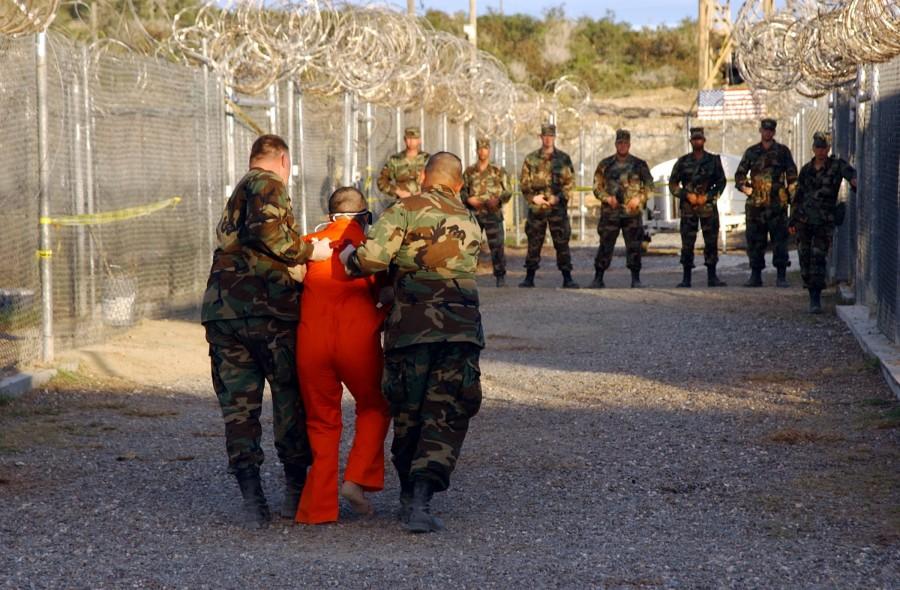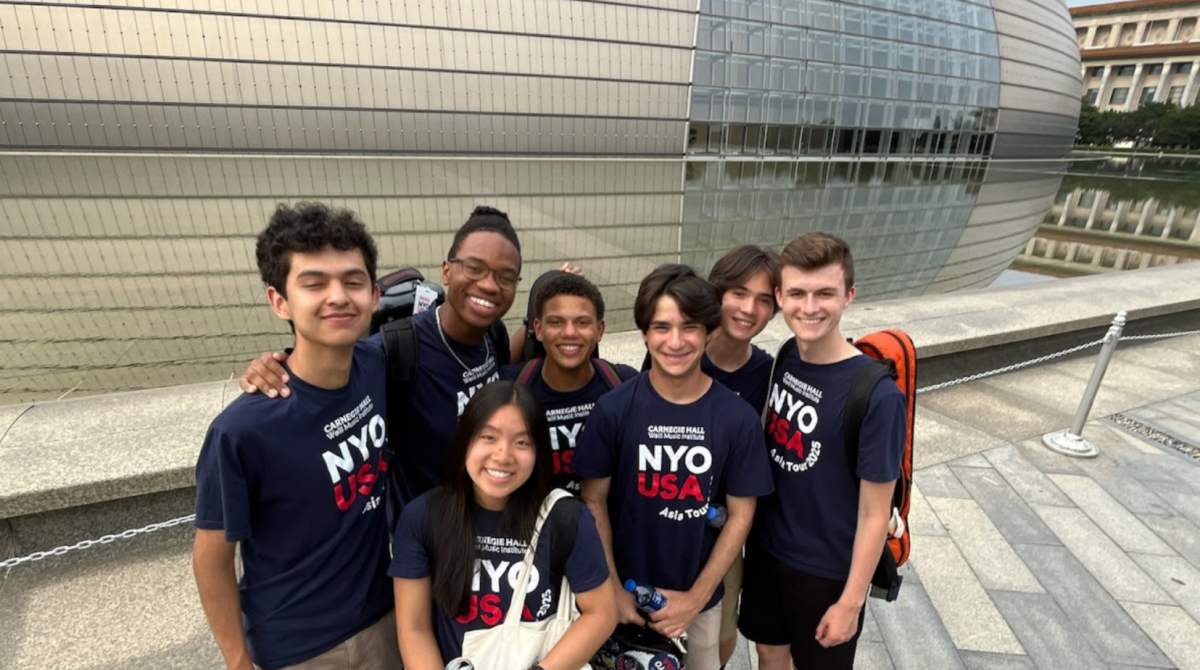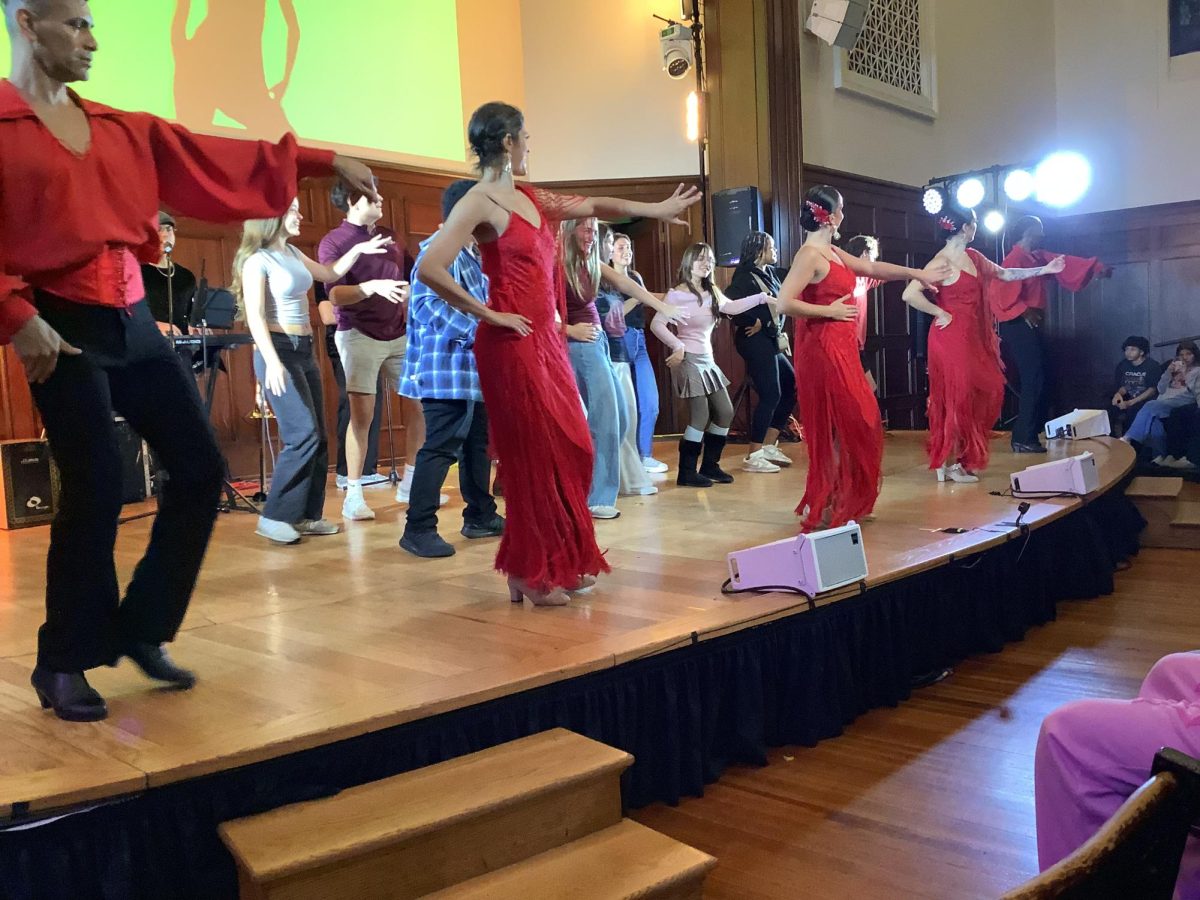Con-Enhanced Interrogation
Taliban and al-Qaida detainees in orange jumpsuits sit in a holding area during in-processing to the temporary detention facility on Jan. 18, 2002, in Guantanamo Bay, Cuba. Photo from MCT Campus
February 3, 2015
A half naked prisoner, chained to the floor died reportedly of hypothermia in a U.S. detention facility called “Cobalt.” What exactly went on in this prison? It is called “enhanced interrogation,” also known as torture.
On December 9, 2014, a Senate Intelligence Committee report on CIA torture, commonly referred to as “The Torture Report,” was released. The 525 page abridged volume of the report which was released to the public was derived from a 6,000 page expanded version that took five years and $40 million to compile.
The report details the mistreatment of detainees and questionable interrogation techniques in the detention facility, “Cobalt”, also known as “The Salt Pit” between 2001 and 2006 following 9-11. The CIA used methods such as “rectal rehydration,” forced nudity, stress positions, sleep deprivation, sensory overload, ice water baths and waterboarding, to name a few, in order to extract information. One detainee, Khalid Sheikh Mohammed, was reportedly waterboarded at least 183 times.
Defenders of enhanced interrogation argue that the methods employed by the U.S. government were integral to protecting national security and providing intelligence to prevent future terrorist attacks. According to the torture report, enhanced interrogation techniques were not effective in eliciting information from detainees.
The report states that, according to CIA records, 39 prisoners who underwent enhanced interrogation did not provide any intelligence. In addition, a significant amount of the intelligence that was extracted from detainees through enhanced interrogation was fabricated and hindered CIA operations. Conversely, a great number of detainees provided valuable intelligence without the influence of enhanced interrogation.This lack of correlation between enhanced interrogation and viable intelligence brings the efficacy of the CIA program into question.
Based on the information disclosed in the report, enhanced interrogation is simply not a reliable method of obtaining intelligence from detainees. Even putting all moral reservations aside, enhanced interrogation did not yield significant results and much of the information derived actually impeded CIA investigations.
It is absurd for the CIA to use the dehumanizing techniques they did, especially when the results are fruitless. 26 out of the 119 prisoners, 22 percent, were falsely detained.
While the CIA’s methods seem tame compared to more radical practices, there is no definitive line to warn the U.S. how far is too far. During the interrogations, many officials were not properly disciplined when they crossed lines, so they could get away with methods not approved by the CIA.
This behavior on the part of the American government is unacceptable. The use of torture goes against the central tenets of our country. The U.S. strives to be a defender of good in the world and the CIA’s actions have tainted our reputation.
America sets a precedent that other countries follow. With the power of being prominent global force comes the responsibility to be a role model for the rest of the world. By using torture as a method of interrogation, the U.S. runs the risk of setting a standard for other countries to follow and projecting an image that does not reflect the foundations of America.






!["[Practicing is the best thing you can do.] Right now I'm trying out for the mock trial team. Last year, I practiced my mock trial skills, and now I'm gonna be able to use them because I practiced them. [It also helps because] I play violin. [This applies to] Everywhere. Music, school, everything." -Emilio Lowder, 9](https://www.chsglobe.com/wp-content/uploads/2025/10/Screenshot-2025-10-07-10.29.23-AM.png)


![“Sometimes when I didn't perform up to my own personal standards [at volleyball], I would be really, really hard on myself, which was difficult. Something that [helped me get out of this negative mindset was that] I remembered bad days come so that you can have your good days. I always think of it as you have to get the bad stuff out of your system so your great days can come. I used this advice a lot to help me refocus myself and get my mood up.” - Claire Booth, 9](https://www.chsglobe.com/wp-content/uploads/2025/09/IMG_2915.jpg)
![“I'm kind of afraid of failing things, especially because I'm really competitive with my little brother. If I start doing badly, he's gonna really take advantage of that. Like in the Star War[s] card game, I used to beat him easily, but now he is a lot better than me. He is really taking advantage of that.”
-Apollo Chu, 9](https://www.chsglobe.com/wp-content/uploads/2025/09/image1-9-1200x900.jpg)